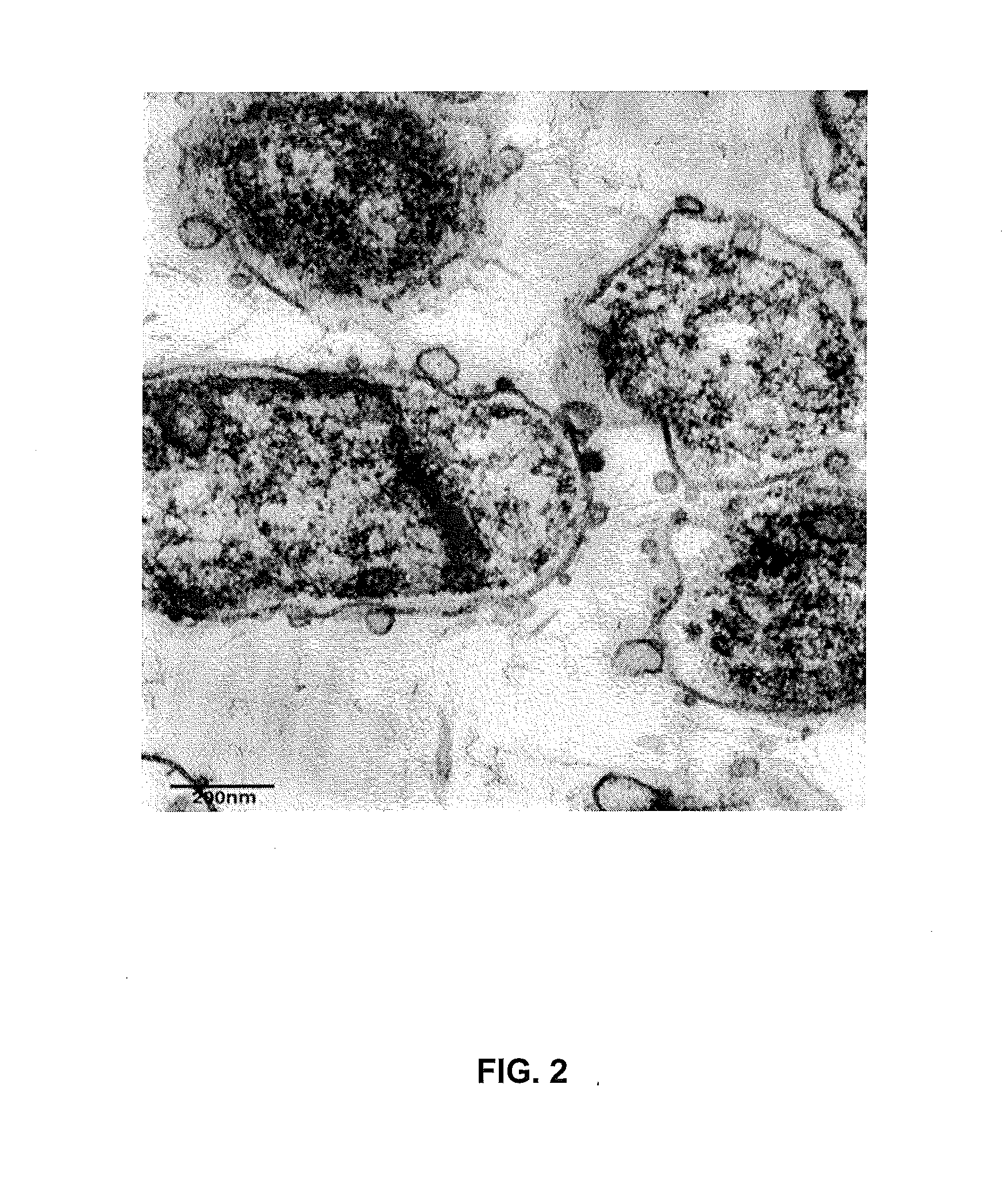Antimicrobial compositions and methods of use
a technology of compositions and antimicrobials, applied in the field of antimicrobial compositions and methods of use, can solve the problems of high cost to the united states health care system, high cost to the human body and agricultural industry, and high cost of hospital-acquired infections, and achieve the effect of improving solubility and low polydispersity index
- Summary
- Abstract
- Description
- Claims
- Application Information
AI Technical Summary
Benefits of technology
Problems solved by technology
Method used
Image
Examples
experimental examples
[0064]Antimicrobial susceptibility and accelerated stability testing of example formulations were conducted to assess emulsion properties. Compositions of the example formulations include a ratio of surfactant to active component as listed in Tables 2-5. In some embodiments, the formulations can include ethanol as a co-solvent. For example, a formulation can include a co-solvent (e.g., ethanol) at about 1% by weight. For stability assessment, the mean droplet size of the emulsion as a function of time and processing was measured via dynamic light scattering. The results of these formulations are presented in Table 2 in the form of emulsion particle size and PDI. The results are shown for embodiments in which the emulsion was diluted to give a concentration of active component of 0.063%; similar droplet sizes can be obtained in higher and lower dilutions of the emulsions. For some embodiments, additional stability processing was conducted, as shown in Tables 3-5. These tests included...
PUM
| Property | Measurement | Unit |
|---|---|---|
| droplet size | aaaaa | aaaaa |
| droplet size | aaaaa | aaaaa |
| droplet size | aaaaa | aaaaa |
Abstract
Description
Claims
Application Information
 Login to View More
Login to View More - R&D
- Intellectual Property
- Life Sciences
- Materials
- Tech Scout
- Unparalleled Data Quality
- Higher Quality Content
- 60% Fewer Hallucinations
Browse by: Latest US Patents, China's latest patents, Technical Efficacy Thesaurus, Application Domain, Technology Topic, Popular Technical Reports.
© 2025 PatSnap. All rights reserved.Legal|Privacy policy|Modern Slavery Act Transparency Statement|Sitemap|About US| Contact US: help@patsnap.com


